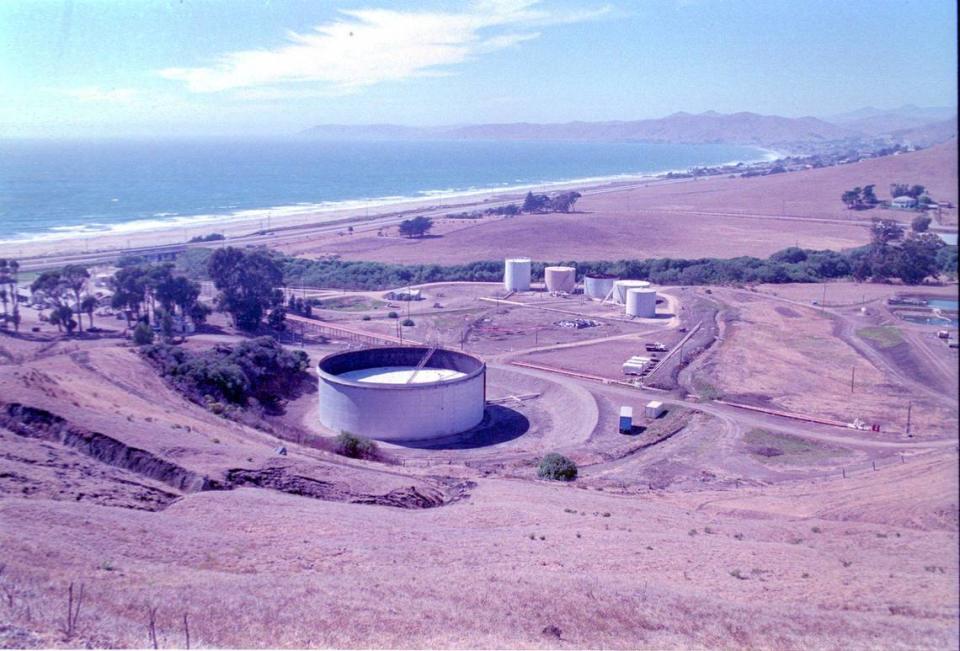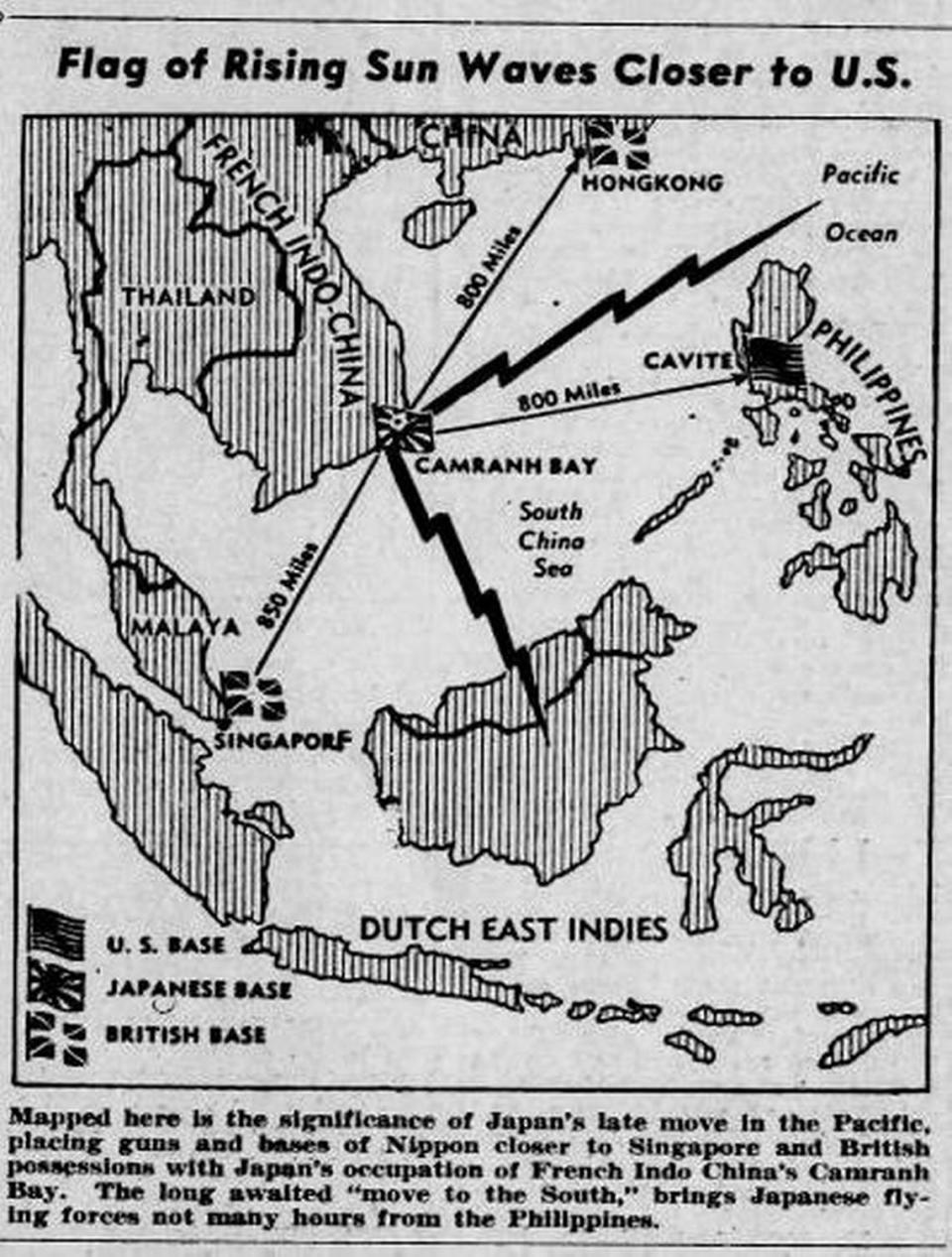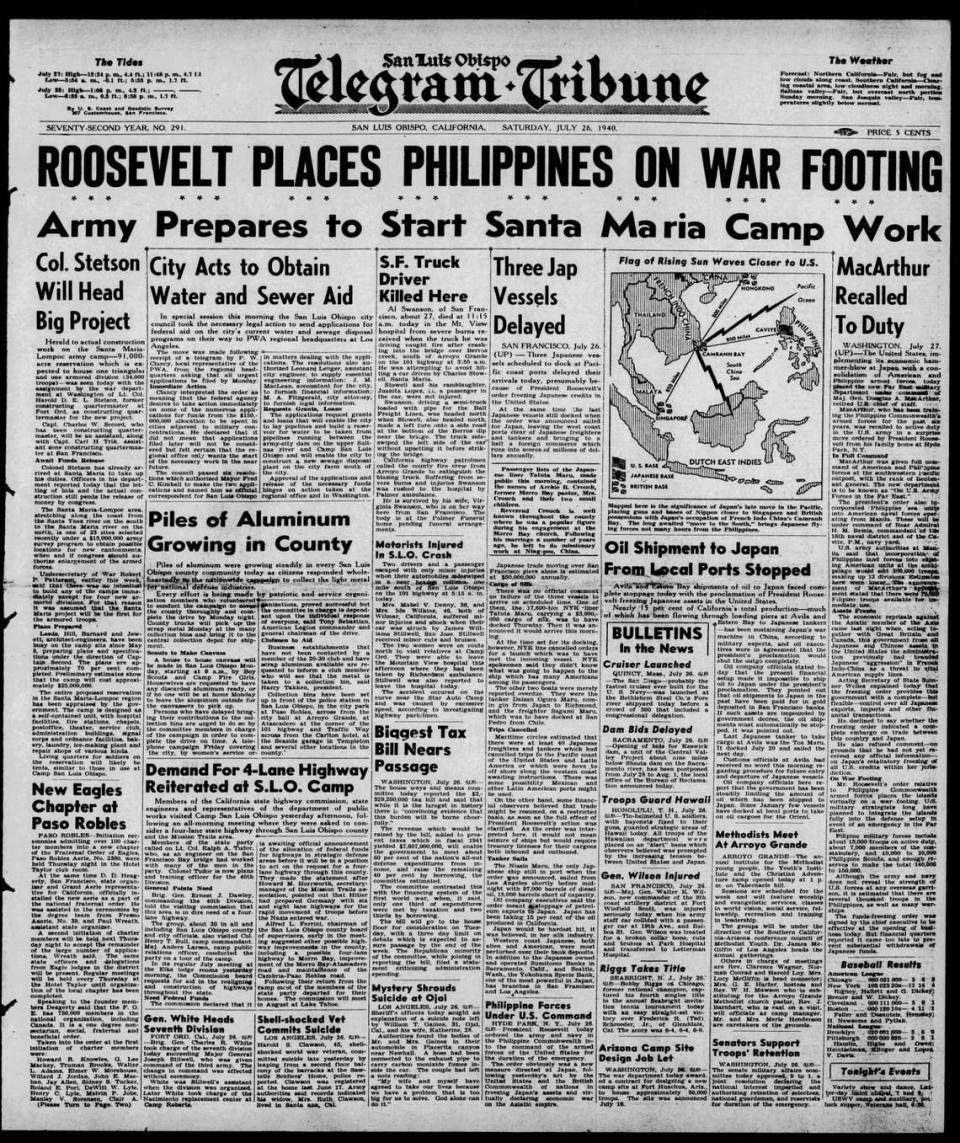Central Coast oil ports were essential during WWII — so government blocked shipments to Japan
During World War II, Japan launched a handful of attacks on the coast of California, Oregon and Washington after the attack on Pearl Harbor.
One of the most notable was the shelling of oil facilities at Elwood north of Santa Barbara by the submarine I-17 on Dec. 20, 1941. Another was the torpedoing and sinking of the Union Oil tanker Montebello by submarine I-21 on Dec. 23, 1941.
One of the reasons the Central Coast was targeted was that the Japanese forces knew of the area, since they bought much of their oil from ports on the Central Coast before the war.
The Union Oil facility at Avila Beach was so vital to the war effort that General Dwight Eisenhower sent a 1942 telegram commendation saying that the Allied War effort hinged on the oil that shipped from the San Luis Obispo County beach town.
It was at one point the largest volume oil port in the world.
Meanwhile, just north of Morro Bay, the Estero Bay oil port had its own storied history beginning in 1929.
Estero is Spanish for estuary so it continued the fine tradition Central Coast doubled naming like Cuesta Grade, Laguna Lake and Morro Rock.

Pipelines carried oil from Kern County and the Kettleman Hills to tankers, heated pumping stations pushed the gooey crude to a pier at the sea port.
The facility was bypassed by inland pipeline to refineries at the end of the 20th Century.
Today property once used by Chevron (formerly Standard Oil of California) to ship oil to tankers is in the process of transitioning to open space.
Via other nearby landings, Estero Bay was also used as a terminal to ship jet fuel to Lemore Air Force Base and fuel oil to PG&E’s Morro Bay Power Plant.
Texaco and Mobile also rented berths from Standard Oil.
At one point a super tanker facility was proposed for the area, but those plans were never realized.
What was happening in SLO County on eve of U.S. entering World War II?
Turn the clock back to July 26, 1941, and war clouds were gathering: Japan had invaded China.

A map on the front page had an ominous foreshadowing, showing Japan had occupied Cam Ranh Bay in French Indochina, now Vietnam. It also showed nearby areas that would be under attack by the end of the year, the oil-rich Dutch East Indies and the Philippines.
We now know World War II would arrive in America at Pearl Harbor on Dec. 7, 1941, less than five months from this publication.
General Douglas MacArthur was called out of retirement by President Franklin Roosevelt and given command of American and Philippine forces in the southwest Pacific.
Roosevelt also froze Japanese assets in the United States which prevented the empire from being able to pay in gold for oil. Historians point to the cut-off of oil as the final precipitating decision for the Japanese Empire to act on a plan to attack the United States.
Other news stories on the front page included a four-lane highway was proposed for Camp San Luis Obispo and plans being made for what is now Vandenberg Space Force Base, thought then it was an unnamed and unbuilt army camp at the mouth of the Santa Ynez River.
Civic organizations in San Luis Obispo County were also collecting scrap metal for defense industries, including aluminum.
A story in the July 26, 1941 Telegram-Tribune detailed the stop in oil shipments to Japan:

Oil Shipment to Japan From Local Ports Stopped
Avila and Estero Bay shipments of oil to Japan faced complete stoppage today with the proclamation of President Roosevelt freezing Japanese assets in the United States.
Nearly 15 percent of California’s total production — much of which has been flowing through loading piers at Avila and Estero Bay to Japanese tankers — has been sustaining Japan’s war machine in China, according to military experts, and oil executives were in agreement that the president’s proclamation would shut the outgo completely.
Oil company officials stated today that the present financial setup made it impossible to ship oil to Japan under the president’s proclamation.
They pointed out that oil shipments to Japan in the past have been paid for in gold deposited in San Francisco banks. If such assets are impounded by government decree, the oil shipments must automatically be stopped, it was pointed out.
Last Japanese tanker to take cargo at Avila was the Toa Maru. It docked July 20 and sailed the next day.
Customs officials at Avila had received no word this morning regarding procedure for future entry and departure of Japanese vessels.
Oil company officials here report that the government has been steadily limiting the mount of oil which has been shipped to Japan. Since January, few vessels have docked at local ports to take on oil cargoes for the Orient.


